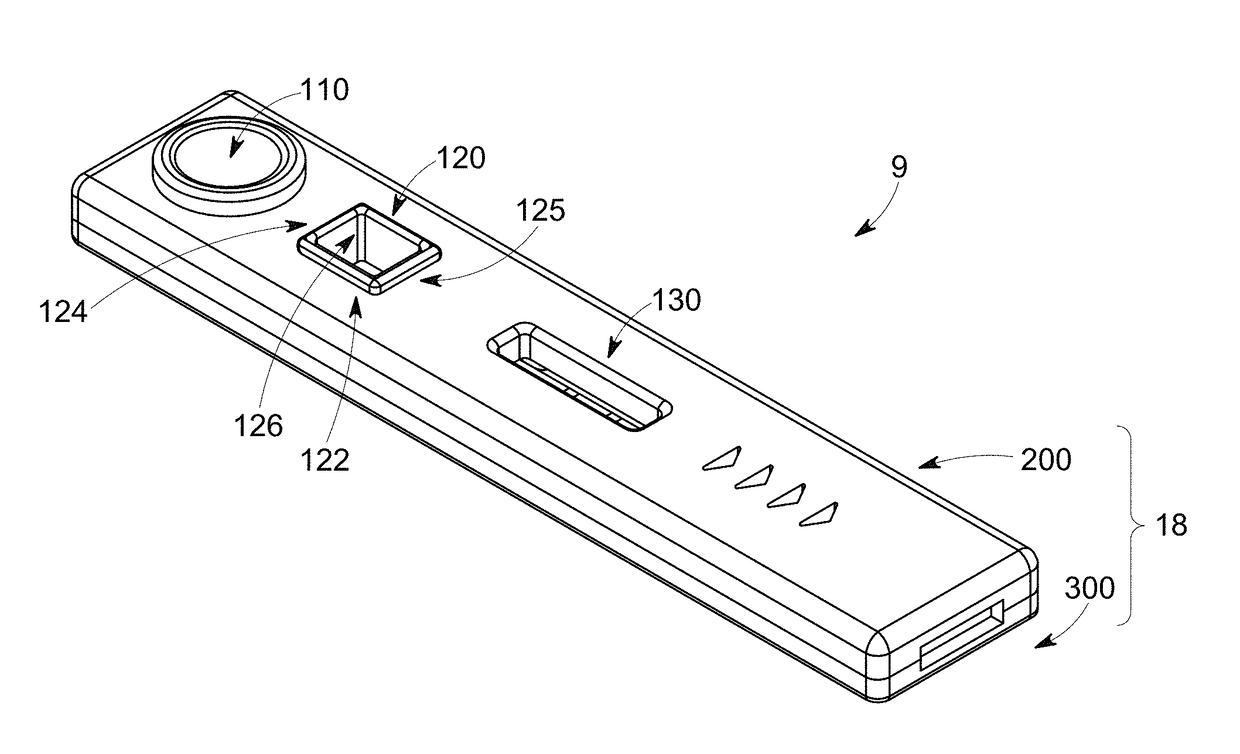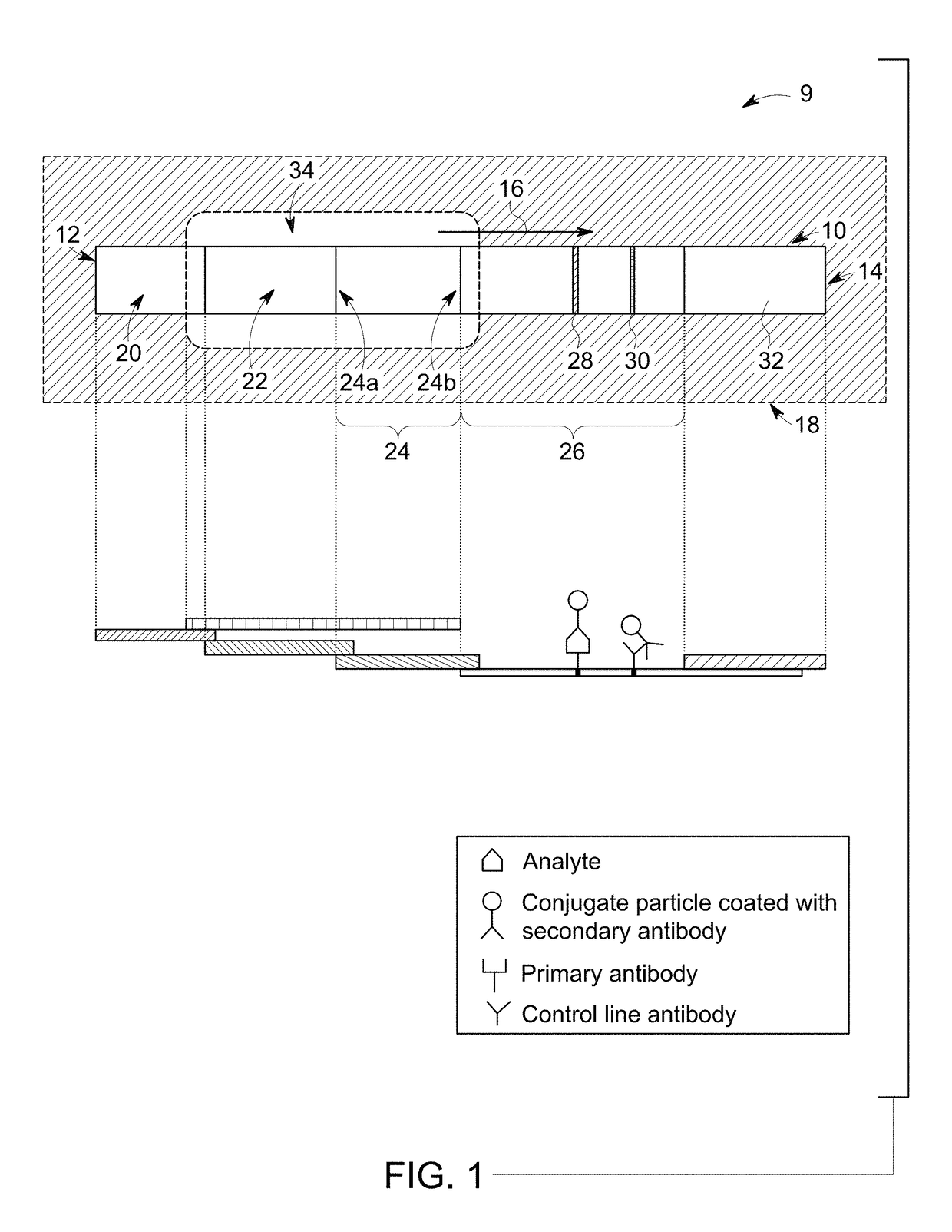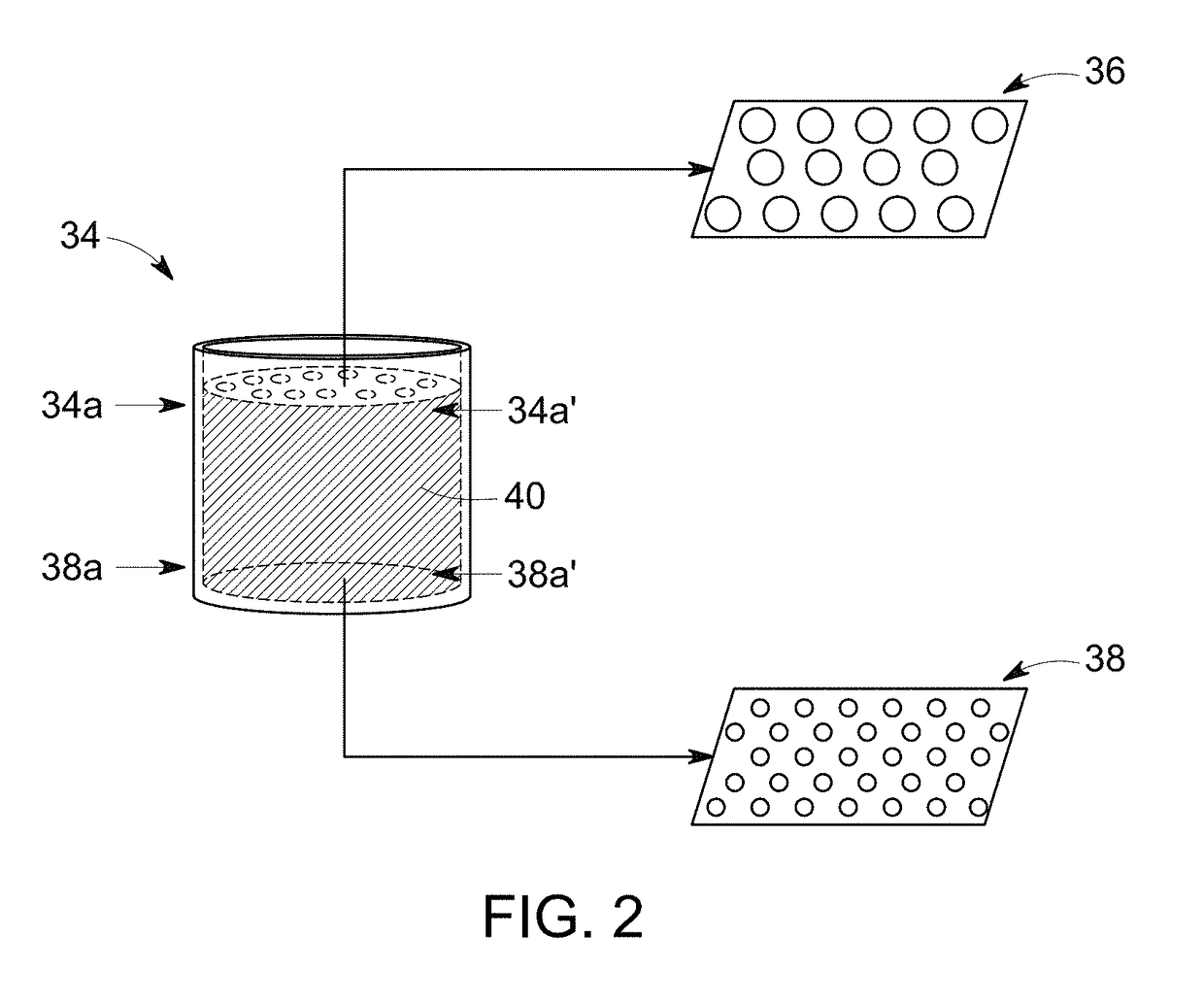Device for rapid diagnostic tests to detect antigens with improved sensitivity
a technology of antigen detection and rapid diagnostic testing, which is applied in the field of rapid diagnostic testing of blood samples, can solve the problems of false negative test, affecting the detection performance or sensitivity of the rdt assay kit, and the increase of the number of steps required for the assay,
- Summary
- Abstract
- Description
- Claims
- Application Information
AI Technical Summary
Benefits of technology
Problems solved by technology
Method used
Image
Examples
example 1
Effect of a Conjugate Zone (Conjugate Pad) Location
[0089]RDT device constructs: The different RDT device constructs were made for testing the detection assay performance which are shown in FIG. 8A. In a benchmark device, the conjugate zone and detection zone were separated by a sample receiving zone, which was used herein as a control and is referred to herein as “Benchmark 1” (or B1 as shown in FIG. 8A). The conjugate zone of a Benchmark 1 was moved up to be adjacent to detection zone forming device construct I, or moved down such that it was further away from detection zone forming device construct II, or an additional conjugate pad (2×) was added to its original location and formed device construct III. A channeled construct was placed on top of the conjugate / sample receiving zone, and the housing was closed until testing. Different zones, such as buffer reservoir, sample receiving zone, conjugate zone, detection zone and wicking pad on the lateral flow unit are represented by B,...
example 2
Effect of Particle Type in Benchmark 1 Configuration
[0092]HRP2 was tested using other available benchmark products (Benchmark 1 or B1, Benchmark 2 or B2) and a product developed in the laboratory (“device construct V”) using cellulose nanobeads as the conjugate particles. The devices construct V and Benchmark 2 were different than the Benchmark 1 in their configurations. The conjugate zones of the Benchmark 2 device and device construct IV were adjacent to the detection zones, which did not allow complete mixing of analytes and conjugate particles before the conjugate particles reached the test lines. This led to less performance improvement even if a channeled construct was added. Different device constructs, such as Hybrid 1 (H1), Hybrid 2 (H2), and Hybrid 3 (H3) were made by using a conjugate pad, a detection pad or a sample receiving pad from different device constructs, such as, Benchmark 1, Benchmark 2 and device construct IV. Hybrid 1 was made by replacing the conjugate pad o...
example 3
Detection of Analyte HRP2 and Quantification of Sensitivity at Low HRP2 Concentration
[0095]In configuration of Benchmark 1, the performances of channeled constructs were tested in broader concentration range to estimate the improvement on limit of detections, for both cellulose nanobeads (CNB) of device construct IV and conjugate particles of Benchmark 1. The quantified results were shown in FIG. 11. For either particle type, there are nearly 10× improvements in both signal intensities and estimated lower detection limits (FIG. 11).
[0096]A configuration of the RDT device (as shown in FIG. 1) having a sample receiving zone between conjugate zone and detection zone ensured thorough mixing of particles and analytes before the particles pass the test line. In another example, the conjugate zone and the sample receiving zone were also disposed on a single pad, when the conjugate particles were sprayed at one end of the pad, leaving enough distance between conjugate zone and detection zon...
PUM
 Login to View More
Login to View More Abstract
Description
Claims
Application Information
 Login to View More
Login to View More - R&D
- Intellectual Property
- Life Sciences
- Materials
- Tech Scout
- Unparalleled Data Quality
- Higher Quality Content
- 60% Fewer Hallucinations
Browse by: Latest US Patents, China's latest patents, Technical Efficacy Thesaurus, Application Domain, Technology Topic, Popular Technical Reports.
© 2025 PatSnap. All rights reserved.Legal|Privacy policy|Modern Slavery Act Transparency Statement|Sitemap|About US| Contact US: help@patsnap.com



